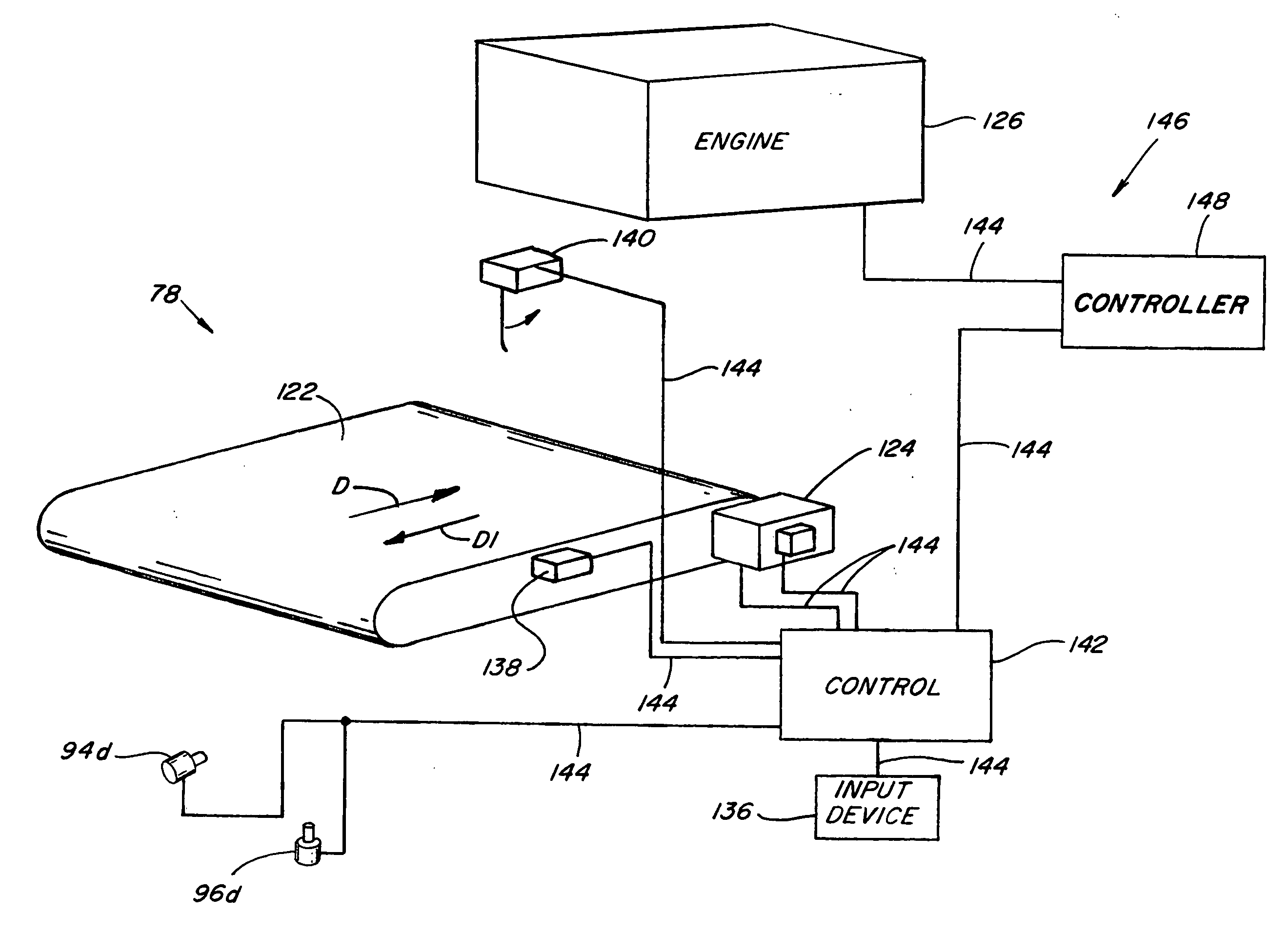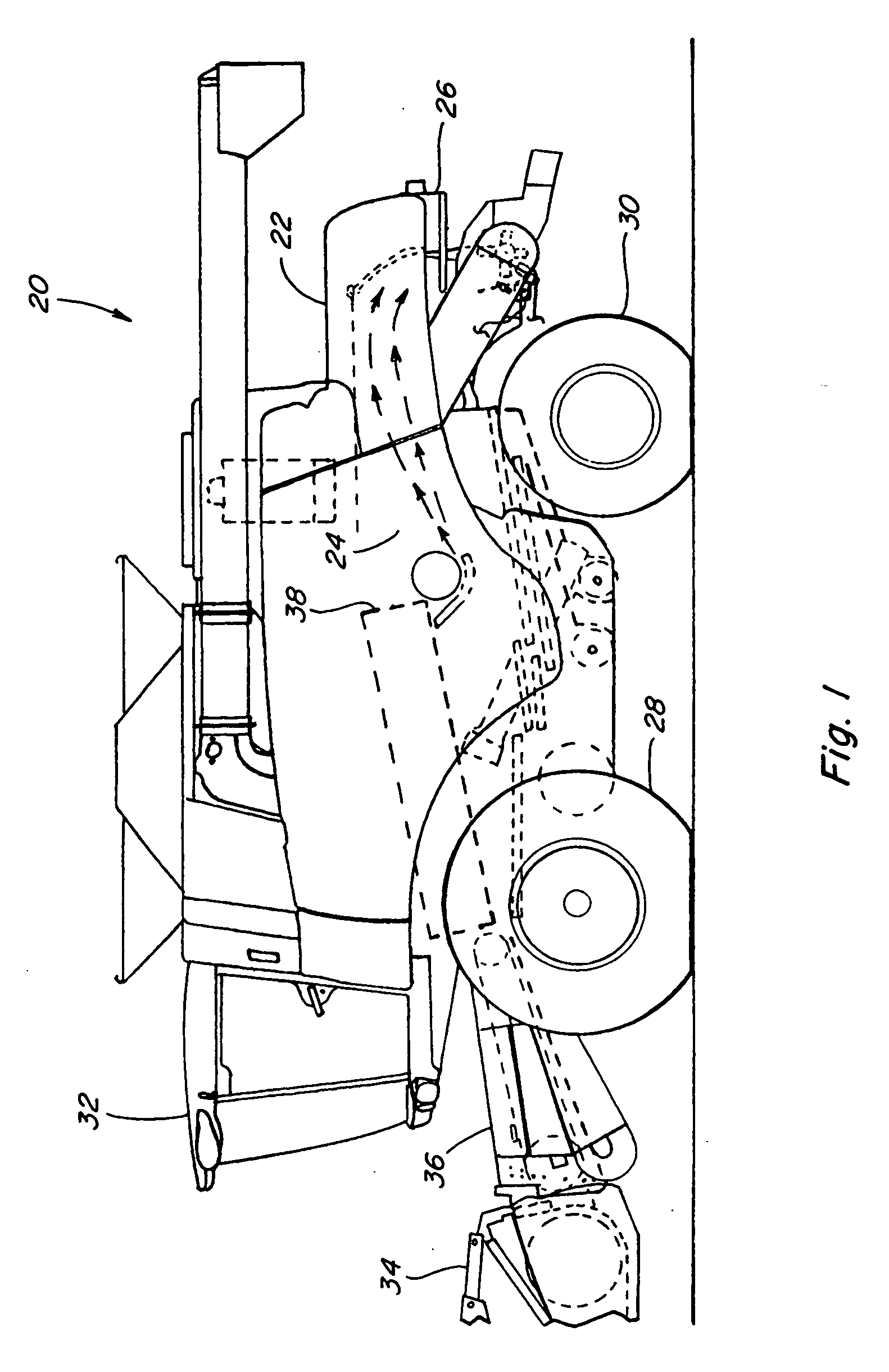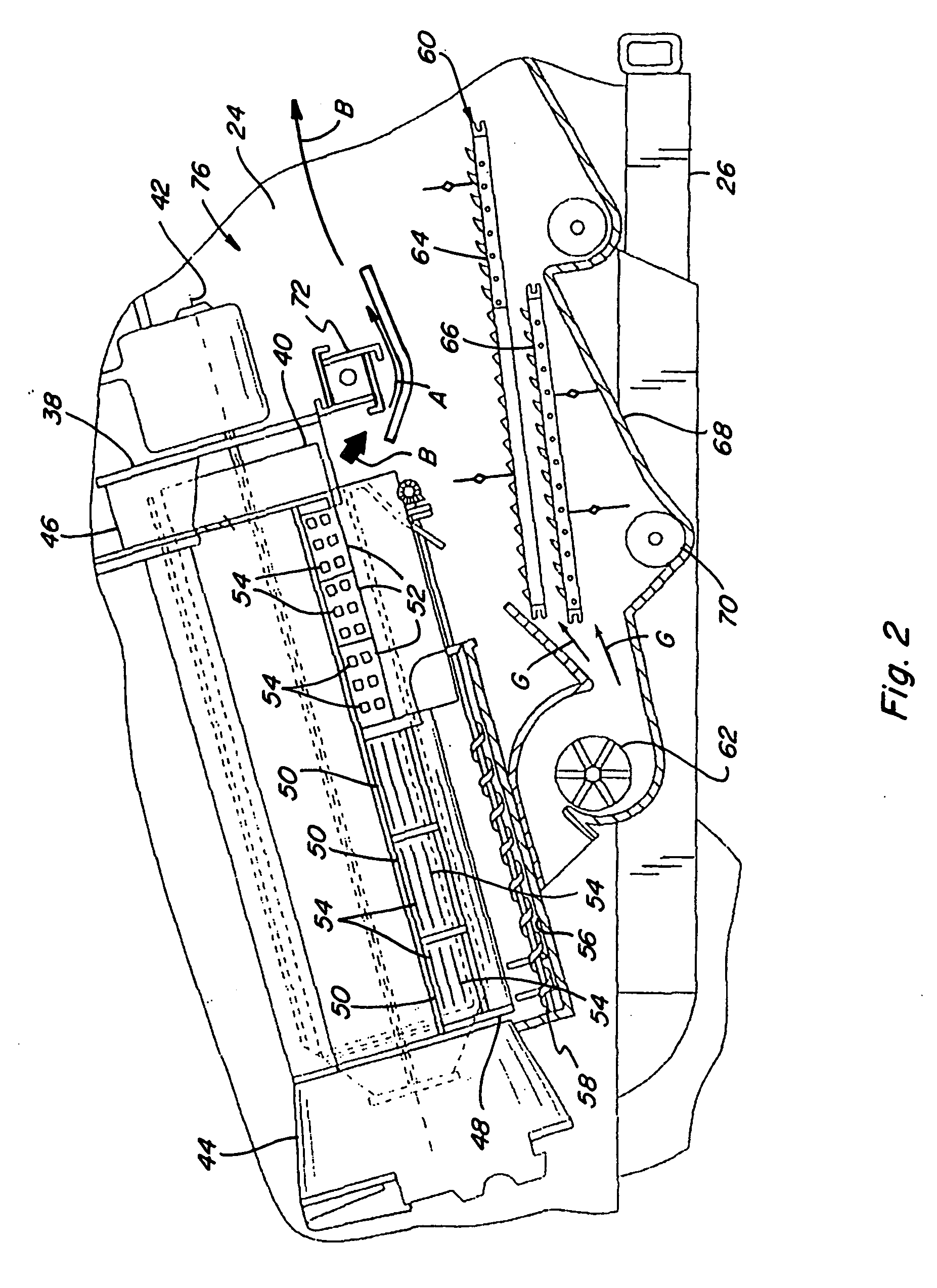Residue chopping also requires a substantial amount of power, especially when chopping
straw of small grain crops, such as wheat and barley.
Each of these configurations will have its own required
power level that will be less than the full amount of power that the engine is able to direct to the subsystems, such that if available maximum power is not properly managed for a given configuration, damage can result.
And, conversely, if insufficient maximum power is available, performance can suffer.
By doing so, however, an operator risks exceeding a subsystem's capacity.
For example, threshing efficiency typically decreases drastically if too much crop is taken in.
Overload will eventually result in excessive wear / and or deformation of the components of the crop processing subsystem.
Elements of the threshing
system, such as threshing slats, may bend and threshing concaves may become distorted.
The available amount of power may also exceed the mechanical limitations of the driveline to the threshing drum, thereby shortening the lifetime of components such as drive belts and gearboxes.
However, an observed shortcoming of setting maximum available power as a function of overall operating mode as suggested above in the first patent, and based on header identity alone, such as proposed in U.S. Pat. No. 6,397,571, is that too much available power may be present in instances when less than all crop processing subsystems are engaged.
As noted above, these subsystems often are significant contributors to the total consumed power.
In many cases, however, this can result in substantially overrunning the subsystems'
functional capability, resulting in grain loss, etc., or exceeding mechanical limits causing failures.
It is not cost effective to design every system to carry the maximum available power for a plethora of configurations, but rather it would be preferred to limit available power to the subsystem not exceeding its performance limits.
Setting maximum available power based on the identity of engaged or activated subsystems such as by monitoring on / off switches as proposed in U.S. Pat. No. 5,878,557, also suffers from a shortcoming that practically, it will necessitate setting the available
power level to accommodate the maximum expected
power usage of those subsystems, and doesn't accommodate reduced power needs of different configurations of the subsystems.
Thus, this system falls short of providing a closely tailored level of available power for different subsystem configurations having different power needs.
Setting maximum available power as a function of measured actual usage, as proposed in U.S. Pat. No. 6,073,428, suffers from the shortcoming that it must rely on measurement means that can be unreliable, inaccurate, and / or complex, and can require calibration to ensure accuracy, so as to be of limited practicality.
Also, the actual
power usage can vary significantly during operation as a result of temporary or intermittent operating conditions such as passage of slugs of crop material through the crop processing systems, such that the level of available power will be correspondingly varied, reactive to demand, as opposed to in anticipation of demand, which can be problematic.
But, when an abrupt increase in
power demand occurs, such as entry of a
slug of dense crop material into one or more of the crop processing subsystems, e.g., the threshing system, chopper, or spreader, the additional engine power available may be inadequate.
This inadequate power can cause the engine to
bog down or stall, such that other subsystem performance suffers.
Then, if in response the system automatically or the operator manually increases power, after the need for the additional power has passed, the now available power will not closely match actual power needs.
 Login to View More
Login to View More  Login to View More
Login to View More 


